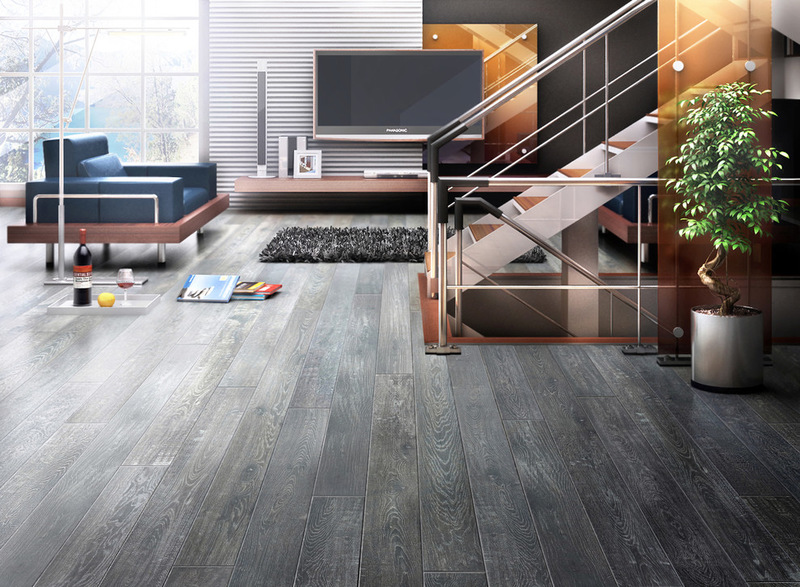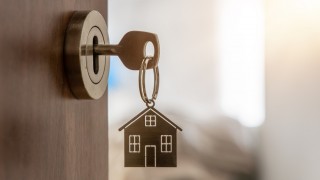Hardwood flooring is a common choice, and can come in a variety of styles, colours, cuts and species. Whether the flooring is solid or engineered (i.e., a hardwood veneer covering a core of hardwood or plywood), it can be an attractive addition to the aesthetic of your house. There are several things to be aware of and questions to ask before deciding on the kind of flooring that you want to install.

Advantages of Hardwood Flooring
There are many advantages of using hardwood flooring rather than other types, such as carpet or vinyl. They are relatively straightforward to install and easy to clean, as they do not accumulate very much dust, dirt or debris. Vacuuming and mopping weekly is enough to keep them clean. High quality hardwood floors are also very strong and unlike vinyl have long-term durability; they can last for generations when finished to certain standards. This makes them an excellent long-term investment, as they can increase the value of your property.
Because of the many varieties of hardwood floor, there is a large range of appearances to choose from, and a properly installed hardwood floor will never produce vibrations or hollow sounds. They’re also great if you’re concerned about indoor air quality, as they have no fibres, embossing or grout lines that can potentially trap pollen, dust, animal dander, particles and allergens, which can be a problem with carpet. Generally speaking, hardwood floors are the best for allergy sufferers. And there’s the reusability point as well: unlike carpet or vinyl, hardwood floors can be refinished rather than replaced when they have experienced some wear and tear.
Engineering
There are several things to think about before deciding on the type of hardwood flooring to install. First, do you want a solid or engineered wood floor? Solid wood floors are solid all the way through, can be used anywhere above ground, and can be sanded and refinished over and over again. They are great for bedrooms, family/living rooms, and kitchens, just not for basements. Conversely, engineered wood floors are made using several layers of veneers, either the same or different species. This layering makes the flooring very stable, so that it contracts and expands less with temperature and humidity fluctuations. Engineered floors can be nailed on top of other wood floors, or glued to concrete or wood subfloors, making them ideal for basement installation (but also for other applications).
Species, Use and Finish
The wood species is the next thing to consider:
- Light woods (ash, maple) make a room seem airy and open
- Medium woods (oak, hickory) make a room seem cosy and warm
- Dark woods (walnut, mahogany) make a room seem refined and stately
After you decide on a look, think about how the room is going to be used, and consider the durability of your chosen wood. For example, for a family with young children, it might be better to get wood that is more hard wearing than a retired couple might need.
Now: do you want a site-finished or a factory-finished floor? Site finishes involve the finish being applied during installation, which gives you the choice of the stain and sheen of your final flooring, giving you unlimited customization options. However, this can cause a lot of noise and dust during installation. Factory finished floors cut down on this, but reduce your options for customization.
In terms of the finish you might want to use, gloss finishes give the shiniest look, reflecting the most light; semi-gloss finishes give a bit of shine, and satin or matte finishes give the least. The less sheen, the less you will see scratches and wear. It’s mostly a matter of which look you like best, as they all give pretty much the same protection.
Floor Maintenance
Once your floor is installed, you want to keep it looking nice. If you have pets, consider clipping their nails as well as placing rugs at doors to lower the amount of grit and dirt being tracked in. Clean your floor regularly: simply sweep, vacuum or mop the floors to get rid of grit and dirt. Don’t use a wet mop though, as these can damage the wood over time or dull the finish. Clean spills immediately with a dry or slightly damp cloth. Rugs will protect your floor from discoloration, and pads on the bottom of your furniture legs will help to prevent scratches.
Finally, use a wood flooring cleaner to shine it up your floor again if it starts looking a bit. But beware of using the wrong type of product, as you may inadvertently damage the flooring you’ve worked so hard to maintain!



